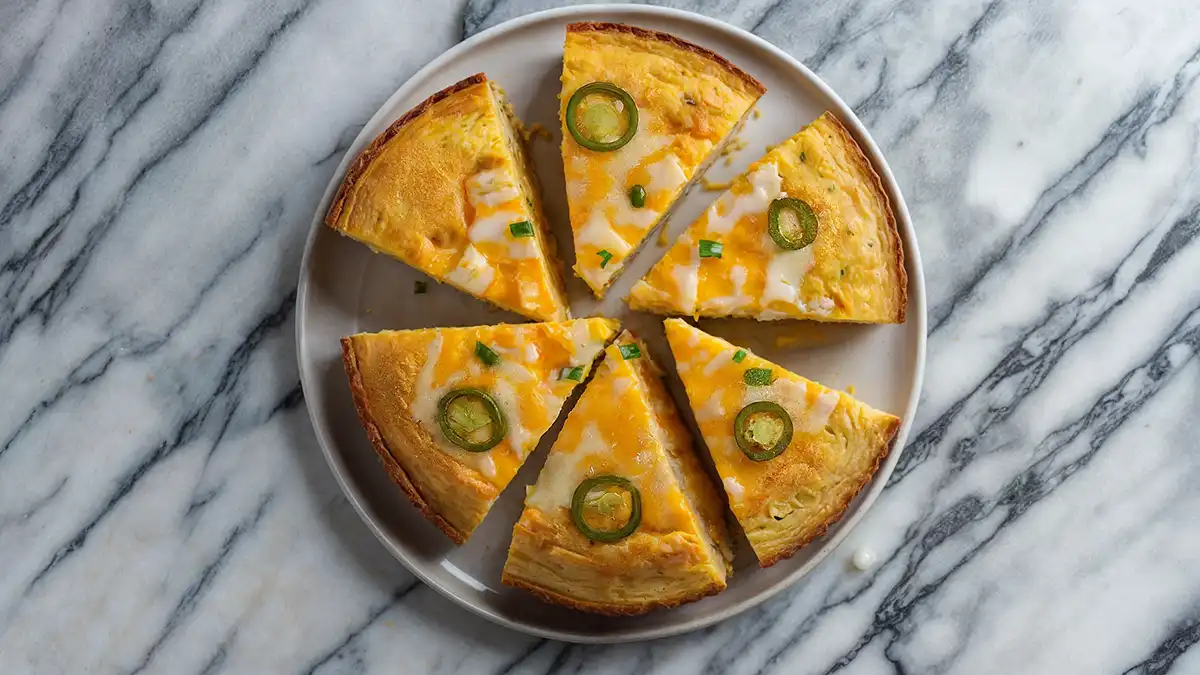Ah, cornbread! Not just any cornbread, but a Martha White Cornbread Recipe that brings a taste of Southern comfort to any table. This dish isn’t merely about satisfying hunger; it’s about celebrating a legacy of flavor and simplicity. So, let’s dive into the history, importance, and diversity of this iconic Southern delight.
Table of Contents
| Section | Content |
|---|---|
| Introduction | Explore the rich history and cultural significance of Martha White Cornbread in Southern cuisine. |
| Mastering the Classic Martha White Cornbread Recipe | Detailed guide on ingredients, step-by-step instructions, and tips for perfect cornbread every time. |
| Nutritional Insights of Martha White Cornbread | Discussion of the health benefits, nutritional components, and dietary considerations of cornbread. |
| Expert Tips for Perfecting Martha White Cornbread | Advanced cooking techniques and troubleshooting tips to achieve the best results in cornbread baking. |
| Creative Twists on Traditional Martha White Cornbread | Innovative variations and flavor combinations to customize cornbread for any occasion. |
| Storing and Reheating Your Homemade Cornbread | Best practices for storing and reheating cornbread to maintain freshness and texture. |
| FAQs | Answers to common questions about improving recipes, ingredients, and baking techniques. |
Historical Significance of Martha White Cornbread Recipe in Southern Cuisine
Cornbread has roots deep in the heart of Southern kitchens, and Martha White has been a household name since its establishment in 1899. Known for its self-rising flour and cornmeal mix, Martha White has made baking easier and tastier. This brand not only survived but thrived by embracing the essence of Southern traditions, transforming a simple meal into a familial experience.
Martha White Cornbread Recipe: A Cornerstone of Southern Cooking
Cornbread is more than just food; it’s a Southern tradition passed down through generations, often found at gatherings and holidays, making every meal feel like a celebration. Whether it’s alongside chili on a cold evening or as a sweet companion to a summer BBQ, cornbread’s versatility makes it indispensable.
Comparison of Cornbread Variations Across the South
Let’s explore how this humble dish varies from one Southern state to another:
| State | Cornbread Type | Unique Ingredients |
|---|---|---|
| Tennessee | Classic Martha White Cornbread | Traditional buttermilk, crispy edges |
| Georgia | Sweet Cornbread | Sugar, sometimes honey |
| Alabama | “Corn Pone” Style | Baked in a skillet, no sugar |
| Louisiana | Cajun-style Cornbread | Jalapeños, corn kernels |
As you can see, each variation brings its own local flair to the table, making cornbread a diverse and adaptable component of Southern cuisine.
In the following sections, we’ll delve deeper into the secrets behind making the perfect Martha White cornbread, explore nutritional insights, and share innovative variations to keep your taste buds dancing. So, grab your skillet and let’s get baking!
Mastering the Classic Martha White Cornbread Recipe
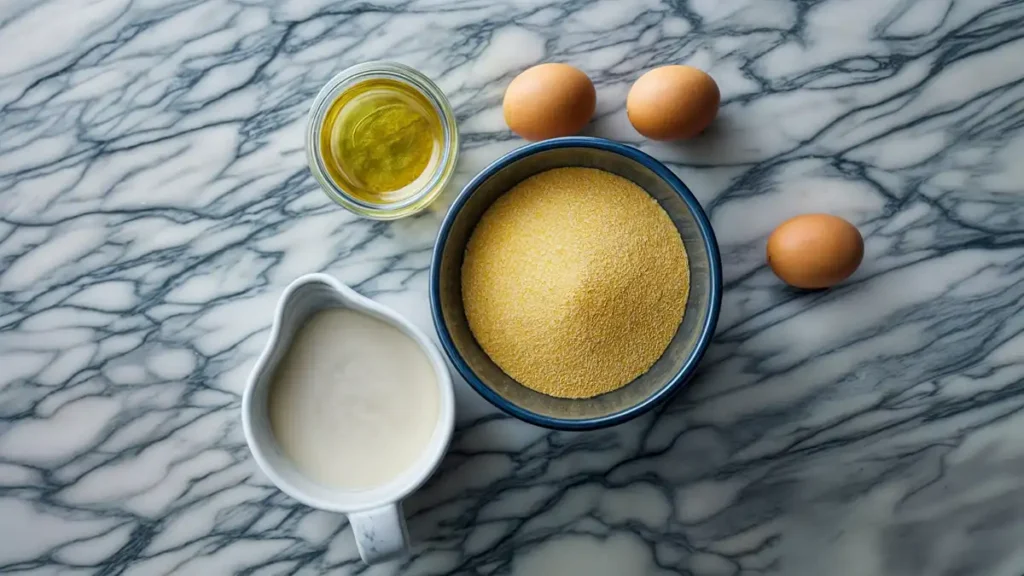
Ready to whip up some delicious Martha White cornbread that’ll make your taste buds sing? Here’s a step-by-step guide to creating that perfect golden crust and fluffy interior, which can serve as the ideal side dish for countless meals. Let’s get your aprons on and ingredients ready!
Essential Ingredients and Proportions
Cornbread’s beauty lies in its simplicity. The basic ingredients for a classic Martha White cornbread recipe include:
- Martha White Self-Rising Cornmeal Mix: The star of the show, ensuring your bread rises beautifully without the fuss.
- Buttermilk or Milk: Buttermilk gives that tangy depth, while milk keeps it light.
- Eggs: They bind everything together, giving your cornbread structure and richness.
- Vegetable Oil: For moisture and a tender crumb.
Step-by-Step Cooking Instructions
- Preheat Your Oven: Crank it up to 450°F (232°C) to ensure a crispy edge.
- Prep Your Pan: Use an 8-inch cast iron skillet or a baking pan, greasing it lightly.
- Mix Your Ingredients: Combine the wet ingredients before folding in the Martha White Cornmeal Mix to avoid overmixing.
- Bake to Perfection: Pour the batter into the hot pan and bake for about 20-25 minutes until golden brown.
Tips for the Perfect Cornbread
- Preheat Your Skillet: Putting your skillet in the oven as it preheats gives your cornbread a wonderfully crispy crust.
- Avoid Overmixing: To keep it light and fluffy, mix just until combined.
- Customize Your Recipe: Feel free to add cheese, jalapeños, or corn kernels to spice things up!
Recipe Variations for Dietary Needs
Offering variations to cater to all your guests is not just thoughtful but also practical. Here are a few quick swaps:
- Gluten-Free: Substitute the regular cornmeal mix with a gluten-free variety.
- Dairy-Free: Use almond milk or coconut milk instead of buttermilk, adding a little lemon juice for tanginess.
Pairing Your Cornbread
What’s better than a slice of warm, buttery cornbread? Pairing it with a dish that complements its richness and simplicity. Why not try it with Grandma’s Old-Fashioned Salmon Patties for a truly comforting Southern meal? This pairing is sure to bring smiles at the dinner table, combining the delicate flavors of the salmon with the hearty, crisp texture of the cornbread.
There you have it! With these tips and tricks, you’re all set to bake the perfect Martha White cornbread. Whether you’re a beginner or a seasoned cook, this guide will help you achieve that delightful Southern classic right in your kitchen.
Nutritional Insights of Martha White Cornbread Recipe

Diving into the nutritional aspects of cornbread not only helps us understand what we’re eating but also how to enjoy it responsibly. Let’s break down the components that make Martha White cornbread both delicious and nutritious.
Key Nutrients in Cornbread
Cornbread, a staple in many diets, offers more than just comforting flavors. Here are the key nutrients:
- Fiber: Aiding digestion, fiber is a crucial component of cornmeal.
- Iron: Essential for blood production, iron is abundantly found in cornmeal.
- Magnesium: Supports muscle and nerve function and is another benefit of cornmeal.
- Calcium: Often added through buttermilk, calcium is vital for bone health.
Caloric Content and Serving Size
Understanding the caloric impact is crucial for integrating cornbread into a balanced diet:
| Component | Amount per Serving |
|---|---|
| Calories | 200 |
| Total Fat | 9g |
| Saturated Fat | 1g |
| Cholesterol | 30mg |
| Sodium | 480mg |
| Carbohydrates | 27g |
| Dietary Fiber | 1g |
| Sugars | 2g |
| Protein | 5g |
Health Benefits and Dietary Considerations
While cornbread is nutritious, moderation is key due to its fat and sodium content. For those looking to enhance the health benefits:
- Opt for low-fat milk or buttermilk alternatives.
- Use less salt and sugar.
- Add fiber-rich ingredients like whole corn kernels or swap some cornmeal for whole grain flour.
Incorporating Cornbread into a Healthy Diet
Cornbread can fit into a healthy diet when paired with nutrient-dense foods. For example, serving it with a balanced dish like chicken and yellow rice provides a wholesome meal that combines protein, veggies, and grains, making every bite count toward a well-rounded diet.
For more detailed health insights about the ingredients used in cornbread, check out this Cornmeal Nutrition Facts and Health Benefits.
By understanding these nutritional aspects, you can make informed choices about incorporating Martha White cornbread into your meals, ensuring it adds both flavor and health benefits to your diet.
Expert Tips for Perfecting Martha White Cornbread Recipe
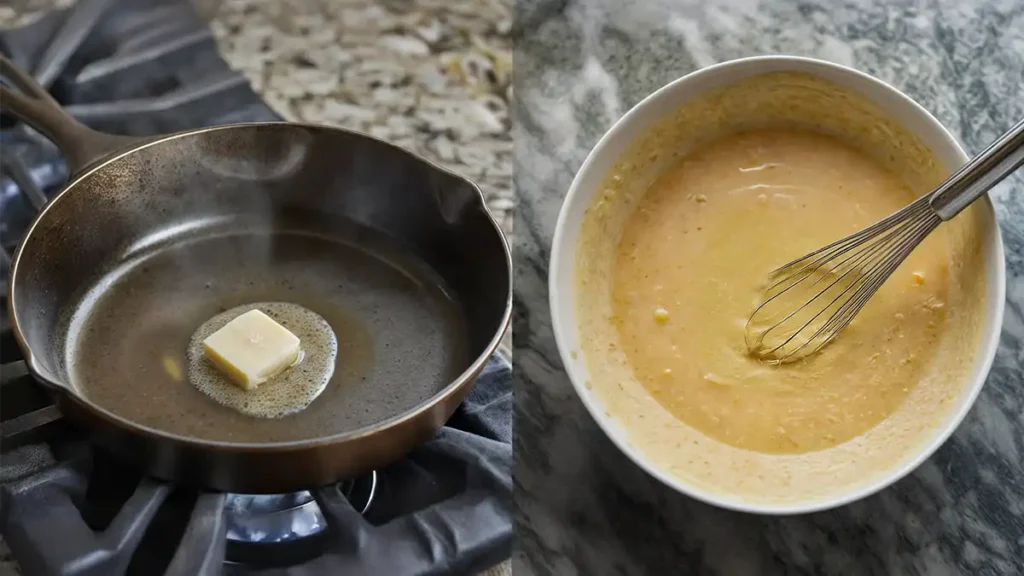
Whipping up a batch of Martha White cornbread can transport you to the South with just one bite. But achieving that perfect texture and taste requires a little know-how. Here, we’ll delve into some expert cooking techniques and tips that ensure your cornbread is the star of any meal.
Essential Cooking Techniques
- Preheat Your Skillet: The secret to that irresistible crust is a hot skillet. Preheating your cast iron in the oven not only heats it evenly but also gives that golden crust that’s to die for.
- Mixing Matters: For a tender cornbread, mix your batter just until the dry and wet ingredients are combined. Overmixing can lead to a tough texture.
- Temperature Check: Oven temperatures can vary, so using an oven thermometer can help you bake your cornbread at the precise heat needed for perfection.
Troubleshooting Common Cornbread Challenges
Ever ended up with dry or crumbly cornbread? Here’s how to avoid common pitfalls:
- Dry Cornbread: Add a bit more milk or buttermilk to the batter to keep it moist.
- Crumbly Texture: Ensure your batter isn’t too thick; it should pour easily into the skillet.
Advanced Tips for Cornbread Aficionados
- Brown Butter for Richness: Swap out the oil for brown butter to add a nutty, rich flavor to your cornbread.
- Sweet vs. Savory: Depending on your preference, tweak the sugar levels to make your cornbread sweet for a dessert or savory for a side dish.
Pairing and Serving Suggestions
Cornbread pairs wonderfully with a variety of dishes, from soups and stews to BBQs. For a real Southern experience, try it alongside Purple Sweet Potato Recipes, where its sweetness complements the earthy flavors of the potatoes.
Here’s a video tutorial to help you visualize the process and pick up some extra tips from the pros:
Remember, practice makes perfect, and with these tips, you’re well on your way to making cornbread that would make any Southern grandma proud.
Creative Twists on Traditional Martha White Cornbread Recipe
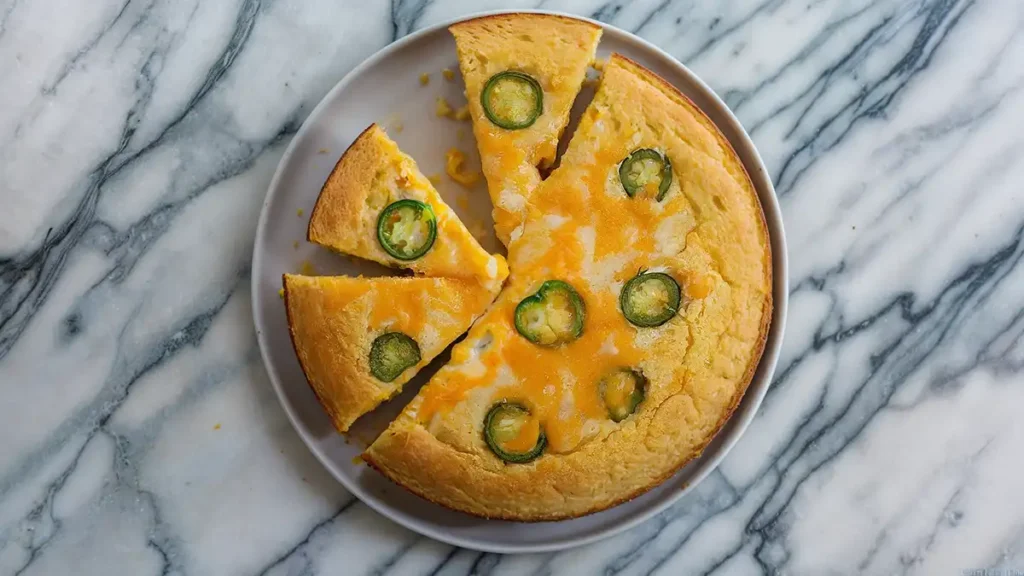
Cornbread, a staple of Southern comfort food, offers a versatile canvas for culinary creativity. By adding a few unique ingredients or tweaking the traditional recipe, you can elevate this humble dish into something extraordinary. Let’s dive into some delicious variations that will keep your guests coming back for more!
Innovative Add-Ins and Flavor Combinations
- Cheese and Jalapeños: Add grated cheddar and diced jalapeños into the batter for a spicy kick.
- Fresh Herbs: Stir in chopped rosemary or thyme for an aromatic touch.
- Corn and Bacon: Fold cooked bacon bits and fresh or frozen corn into the batter for a smoky flavor and extra texture.
Sweet and Savory Variations
Why settle for ordinary when you can customize your cornbread to suit any meal or occasion? Here are some ideas:
- Honey and Vanilla: For a sweet version, add honey and a splash of vanilla extract to the batter.
- Garlic and Onion: Sauté garlic and onion, then mix into the batter for a savory twist that pairs perfectly with stews.
Pairings That Pop
Cornbread is not just a side dish; it can be the highlight of a meal when paired correctly:
- With Chili: Serve a spicy, hearty chili with a side of jalapeño cheddar cornbread.
- As Dessert: Sweeten your cornbread with sugar and serve with whipped honey butter as a treat.
Cornbread for Every Occasion
Whether you’re hosting a backyard BBQ or a cozy family dinner, here’s how to make your cornbread stand out:
- BBQs: Opt for a cheesy, spicy cornbread to complement smoky meats.
- Holiday Meals: Add cranberries and orange zest for a festive twist.
For those who love to try new dishes that blend well with cornbread, check out this collection of Cracker Barrel Pancake Recipes. It’s a fantastic way to explore how traditional Southern dishes can mingle delightfully with your homemade cornbread.
By embracing these creative ideas, you’ll not only enhance the flavors of your traditional Martha White cornbread but also spark joy and excitement at your dining table. Happy baking!
Storing and Reheating Your Homemade Cornbread
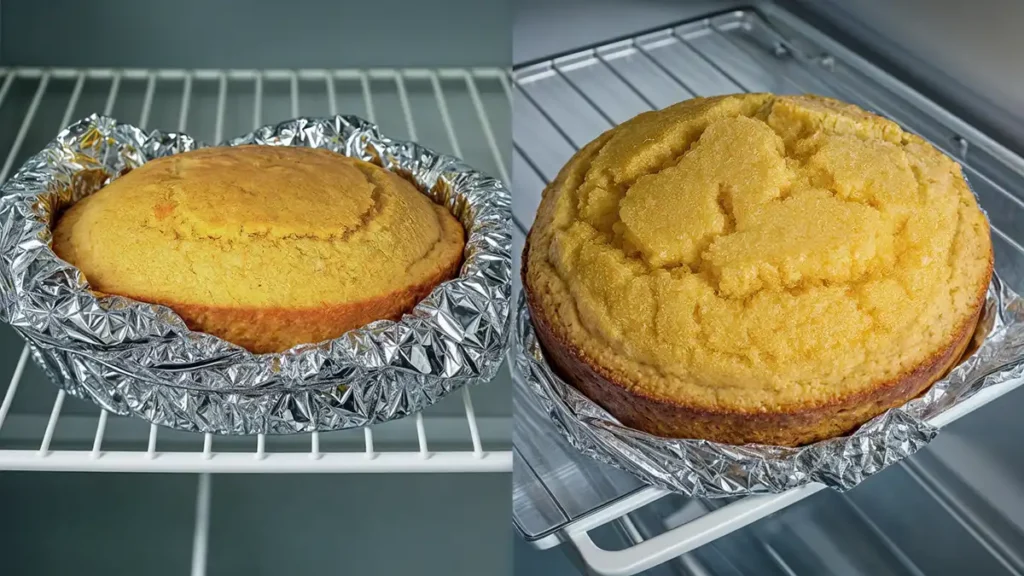
Once you’ve mastered making delicious Martha White cornbread, the next step is ensuring you can enjoy it just as much the next day. Proper storage and reheating techniques are crucial to maintaining the flavor and texture of your cornbread. Let’s walk through the best practices to keep your cornbread tasting fresh.
Best Practices for Storage
- Cool Down First: Always allow your cornbread to cool completely before storing to prevent moisture buildup, which can lead to sogginess.
- Room Temperature Storage: Wrap it tightly in plastic wrap or aluminum foil, and keep it in a cool, dry place for up to two days.
- Refrigerator Storage: For longer storage, wrap the cornbread in foil or place it in an airtight container, and refrigerate for up to one week.
Freezing for Long-Term Storage
If you’ve made a large batch or want to keep your cornbread for a future date, freezing is an excellent option:
- Wrap Well: Wrap individual slices or the entire loaf in plastic wrap and then in foil. This double layer helps protect the cornbread from freezer burn.
- Label and Freeze: Always label your wrapped cornbread with the date, and you can freeze it for up to three months.
Reheating Your Cornbread to Perfection
Reheating cornbread correctly is key to restoring its fresh-baked taste and texture:
- Oven Method: Preheat your oven to 350°F (177°C). Wrap the cornbread in foil and heat for about 10-15 minutes or until warmed through. This method helps retain the moisture and keeps the edges crispy.
- Microwave Method: For a quick warm-up, place slices on a microwave-safe plate and cover with a damp paper towel. Microwave on high for about 10-20 seconds per slice. Be careful not to overheat as it can dry out the cornbread.
By following these tips, you can ensure that your Martha White cornbread remains delicious, whether you’re enjoying it fresh out of the oven or as a tasty leftover.
FAQs
Navigating the world of cornbread, especially with a specific brand like Martha White, can raise a few questions. Here, we tackle some common inquiries to help you perfect your cornbread baking skills.
How to Improve Martha White Cornbread Mix?
To enhance your Martha White cornbread mix, consider adding flavor-rich ingredients like sweet corn, diced jalapeños, or shredded cheese. For a sweeter twist, a bit of honey or sugar can do wonders. Additionally, using buttermilk instead of regular milk can add a tangy depth to the flavor.
What are the Ingredients in Martha White Cornbread Mix?
Martha White Cornbread Mix typically contains flour, cornmeal, leavening (baking soda, sodium aluminum phosphate), salt, and sometimes a touch of sugar to balance the flavors. It’s designed for convenience, requiring only a few additional wet ingredients like milk, eggs, and oil.
Why is My Martha White Cornbread Crumbly?
Cornbread can turn out crumbly due to a few factors: not enough fat or liquid in the mix, overbaking, or even the type of cornmeal used. To prevent this, ensure your batter is not too dry before baking, and try not to overmix it. Adding a little extra fat like butter or oil can also help bind the ingredients better.
Can You Add Sugar to Martha White Cornbread Mix?
Absolutely! Adding sugar to your Martha White cornbread mix can enhance the flavor, especially if you prefer a sweeter cornbread. Start with a small amount, such as a tablespoon or two, taste the batter, and adjust according to your preferences.
Whether you’re a seasoned baker or just starting out, mastering the art of making perfect Martha White cornbread can add a tasty, comforting element to your meals. Remember, each batch is an opportunity to tweak and perfect your recipe. Feel free to experiment with different add-ins and adjustments to suit your taste buds.
Thank you so much for reading! If you have any more questions or want to share your own cornbread triumphs and tips, don’t hesitate to drop a comment below. Happy baking!

